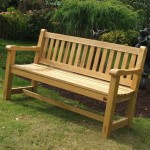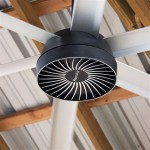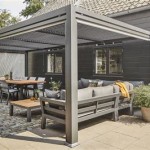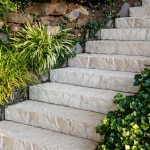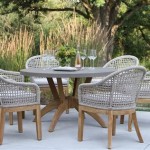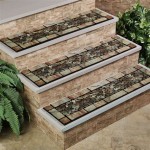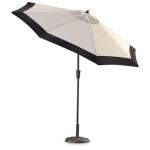The Enduring Appeal of Wood and Metal Benches for Outdoor Spaces
Outdoor benches serve as functional and aesthetic additions to gardens, patios, parks, and other public spaces. Among the diverse materials used in their construction, the combination of wood and metal stands out for its durability, versatility, and visual appeal. Wood and metal benches offer a balance of natural warmth and industrial strength, making them a popular choice for both residential and commercial applications. Understanding the various aspects of these benches, including the materials used, design considerations, maintenance requirements, and their impact on the surrounding environment, is crucial for making informed purchasing decisions.
The inherent strength of metal, coupled with the natural beauty of wood, creates a harmonious blend that complements various architectural styles. These benches provide comfortable seating while withstanding the rigors of outdoor exposure. The metal components provide structural support and resistance to corrosion, while the wooden elements offer a tactile and visually pleasing surface. The combination is not merely functional; it also contributes to the overall aesthetic character of the outdoor space.
Material Selection: Wood and Metal Varieties
The longevity and aesthetic quality of a wood and metal outdoor bench are heavily influenced by the specific types of wood and metal employed in its construction. The choice of materials impacts not only the bench’s appearance but also its resistance to environmental factors such as moisture, sunlight, and temperature fluctuations.
When it comes to wood, several options are commonly used for outdoor benches. Teak, known for its natural oils and resistance to decay, is a premium choice. It weathers gracefully to a silver-gray color and requires minimal maintenance. Redwood, another durable option, is naturally resistant to insects and rot. However, it may require periodic sealing to maintain its color and prevent weathering. Cedar is a lighter-weight alternative with a pleasant aroma and good resistance to moisture. Pressure-treated lumber is also widely used, offering enhanced resistance to decay and insect damage, although it may not possess the same aesthetic appeal as natural hardwoods. The selection of wood should consider the local climate, the desired level of maintenance, and the overall aesthetic goals for the outdoor space.
Similarly, the choice of metal significantly impacts the bench’s durability and aesthetic appeal. Cast iron, known for its strength and intricate design possibilities, is a traditional choice for bench frames and legs. However, it is susceptible to rust and requires regular painting or powder coating to prevent corrosion. Steel, another strong and versatile option, is often powder-coated or galvanized to enhance its corrosion resistance. Aluminum is a lightweight and rust-proof alternative, making it suitable for coastal environments or areas with high humidity. Stainless steel offers superior corrosion resistance, making it a premium choice for demanding outdoor applications. The metal chosen should be appropriate for the intended use and the prevailing environmental conditions.
Design and Construction: Balancing Form and Function
The design and construction of a wood and metal outdoor bench involve a careful balance of form and function. The bench must be structurally sound and comfortable for seating while also visually appealing and complementary to its surroundings. Design considerations include the overall style, dimensions, seating arrangement, and any additional features such as backrests, armrests, or decorative elements.
The style of the bench can range from traditional to contemporary, depending on the desired aesthetic. Traditional benches often feature ornate cast iron frames with wooden slats or planks for the seating surface. These designs may incorporate intricate details and historical motifs. Contemporary benches typically feature simpler, more minimalist designs with clean lines and geometric shapes. These designs often emphasize the natural beauty of the wood and the sleekness of the metal.
The dimensions of the bench should be appropriate for the intended users and the available space. A standard bench height is typically around 18 inches, allowing for comfortable seating. The length of the bench can vary depending on the desired seating capacity. Shorter benches are suitable for individual use or smaller spaces, while longer benches can accommodate multiple people. The depth of the seat should also be considered, providing adequate support and comfort.
The construction of the bench must be robust and durable to withstand the rigors of outdoor use. The metal frame should be securely joined using welding, bolting, or other appropriate methods. The wooden components should be properly treated and attached to the frame using screws, bolts, or other fasteners. The bench should be designed to distribute weight evenly and prevent wobbling or instability. Attention to detail in the construction process is crucial for ensuring the bench’s longevity and safety.
Ergonomics are also a key consideration in the design of outdoor benches. Backrests can provide added support and comfort, especially for longer periods of sitting. The angle of the backrest should be carefully considered to promote proper posture. Armrests can also enhance comfort and provide a place to rest the arms. The height and placement of armrests should be ergonomically appropriate for the intended users. The edges of the wooden slats or planks should be rounded or beveled to prevent discomfort or injury. Attention to these ergonomic details can significantly enhance the user experience.
Maintenance and Longevity: Preserving the Investment
Proper maintenance is essential for preserving the investment in a wood and metal outdoor bench and ensuring its longevity. Regular cleaning, inspection, and repair can prevent damage and extend the bench’s lifespan. The specific maintenance requirements will vary depending on the materials used and the environmental conditions.
Regular cleaning is crucial for removing dirt, debris, and other contaminants that can damage the wood and metal surfaces. A mild soap and water solution can be used to clean the bench, followed by a thorough rinsing. A soft brush or cloth can be used to remove stubborn dirt or stains. Avoid using harsh chemicals or abrasive cleaners, as they can damage the finish. For metal surfaces, a rust inhibitor can be applied periodically to prevent corrosion.
Regular inspection is important for identifying any signs of damage or deterioration. Check for cracks, splits, or rot in the wood. Inspect the metal frame for rust, corrosion, or loose joints. Tighten any loose screws or bolts. Repair any minor damage promptly to prevent it from escalating into more significant problems. Replace any damaged or deteriorated components as needed.
The wood components of the bench may require periodic sealing or staining to protect them from moisture and sunlight. A penetrating oil or varnish can be used to seal the wood, preventing water absorption and reducing the risk of rot. A stain can be applied to maintain the desired color and enhance the wood’s natural beauty. The frequency of sealing or staining will depend on the type of wood and the environmental conditions. Follow the manufacturer’s instructions for the specific sealing or staining product used.
The metal components of the bench may require periodic painting or powder coating to prevent corrosion. Remove any rust or loose paint before applying a fresh coat of paint or powder coating. Use a primer specifically designed for metal surfaces to promote adhesion and prevent corrosion. Apply multiple thin coats of paint or powder coating for optimal protection. The frequency of painting or powder coating will depend on the type of metal and the environmental conditions.
Consider covering the bench during periods of inclement weather or prolonged non-use. A waterproof cover can protect the bench from rain, snow, and sun, reducing the risk of damage and extending its lifespan. Store the bench in a sheltered location during the off-season to further protect it from the elements. Proper storage can significantly prolong the bench’s lifespan.
In conclusion, the enduring appeal of wood and metal outdoor benches stems from their combination of durability, versatility, and aesthetic appeal. By carefully selecting the appropriate materials, considering the design and construction, and implementing a regular maintenance program, individuals and organizations can invest in benches that will provide comfortable seating and enhance the beauty of outdoor spaces for years to come. The decision to incorporate these benches into a landscape reflects a commitment to both functionality and visual harmony, creating welcoming and enjoyable environments for all.

Outdoor Cast Iron Ends Wooden Garden Bench L1 2m

Outdoor Cast Iron Ends Wooden Garden Bench L1 5m

Gabin Modern Solid Wood Outdoor Table Bench 120l X 130w 43 72h Teak

Patio Park Garden Metal Bench Porch Path Chair Furniture Cast Iron Hardwood Walmart Com

Daxton Outdoor Composite Wood Bench

Outdoor Stainless Steel Wooden Bench Eezee

50 Modern Outdoor Bench Steel Wood Design Ideas 2024

The Benefits Of Recycled Plastic Benches Vs Wood Metal Iron Polly Products

Phi Villa 33 Outdoor Kids Sized Garden Metal Bench With Wood Seating

Contemporary Mid Century Modern Metal Benches Article

